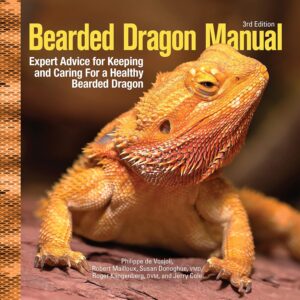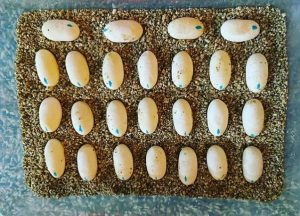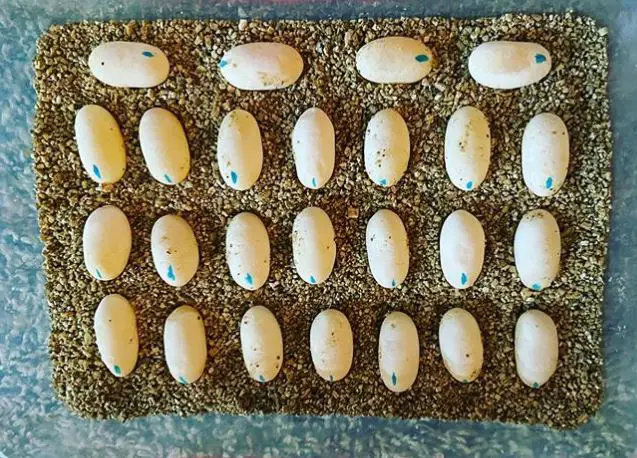How many eggs does a bearded dragon lay
How many eggs does a bearded dragon lay: Bearded dragons have gained immense popularity as captivating reptile pets due to their unique appearance, docile nature, and relatively low maintenance requirements. Originating from the arid regions of Australia, these enchanting creatures have become a favorite among reptile enthusiasts around the world.
However, despite their growing presence in households and pet stores, there are still many fascinating aspects of bearded dragon biology that remain unknown to most people. One particularly intriguing question that frequently arises among bearded dragon enthusiasts is: how many eggs does a bearded dragon lay?
Understanding the reproductive capabilities of these reptiles not only satisfies curiosity but also plays a crucial role in providing optimal care for breeding females. By delving into the intricacies of bearded dragon reproduction, we can gain insights into their natural behavior and tailor their environment to ensure their well-being.
Brief overview of bearded dragons as popular reptile pets
 Bearded dragons (Pogona vitticeps) have captivated the hearts of pet owners with their unique appearance and charming personality. These diurnal lizards are known for their distinct beard-like scales under their chin that they can puff out when threatened or during courtship displays – hence the name “bearded” dragon. With an average length ranging between 18-24 inches (45-60 cm), they are considered medium-sized reptiles.
Bearded dragons (Pogona vitticeps) have captivated the hearts of pet owners with their unique appearance and charming personality. These diurnal lizards are known for their distinct beard-like scales under their chin that they can puff out when threatened or during courtship displays – hence the name “bearded” dragon. With an average length ranging between 18-24 inches (45-60 cm), they are considered medium-sized reptiles.
One reason for the widespread popularity of bearded dragons as pets is their gentle disposition. They are generally docile creatures that tolerate regular handling well, making them ideal companions for both experienced herpetologists and first-time reptile owners alike.
Additionally, they are relatively easy to care for since they adapt well to captive environments when provided with appropriate heating, lighting, and diet. Their captivating appearance also adds to their appeal as pets.
Bearded dragons exhibit a wide array of color variations – ranging from vibrant oranges and yellows to muted browns and grays – providing owners with a visually stunning reptile companion. These colors can intensify or fade depending on factors such as age, gender, and stress levels, making each dragon unique in its own way.
Intriguing question: How many eggs does a bearded dragon lay?
Now, let us address the burning question that often piques the curiosity of bearded dragon enthusiasts: how many eggs does a bearded dragon lay? Female bearded dragons are capable of laying eggs through a process called oviparous reproduction. Oviparity refers to the production of fertilized eggs that develop outside the female’s body until they are ready to hatch.
The number of eggs a female bearded dragon lays per clutch can vary depending on several factors. On average, females produce between 15 to 30 eggs per clutch.
However, it is important to note that this range is not fixed and can deviate both upwards and downwards based on various circumstances such as the health and size of the female, environmental conditions during breeding, and genetic predisposition. Understanding the intricacies of egg-laying in bearded dragons goes beyond simple curiosity; it assists breeders in providing appropriate care during this crucial reproductive period.
By gaining insight into these fascinating creatures’ reproductive patterns, we can ensure optimal husbandry practices for breeding females and contribute to their overall well-being. Stay tuned as we explore further into the intricacies of bearded dragon reproduction – from understanding their reproductive system to delving into factors influencing egg production – all with one aim: unraveling the mysteries surrounding these captivating reptiles’ clutch sizes.
Understanding Bearded Dragons’ Reproduction
Explanation of Bearded Dragon’s Reproductive System and Cycle
 Bearded dragons, scientifically known as Pogona vitticeps, possess a fascinating reproductive system that follows a well-defined cycle. These reptiles have two primary reproductive organs: the ovaries in females and the testes in males.
Bearded dragons, scientifically known as Pogona vitticeps, possess a fascinating reproductive system that follows a well-defined cycle. These reptiles have two primary reproductive organs: the ovaries in females and the testes in males.
The reproductive cycle of female bearded dragons begins with the development of eggs within their ovaries. Unlike mammals, bearded dragons do not possess a uterus.
Instead, they have two functional oviducts where the eggs develop and eventually mature. The reproductive cycle is influenced by various internal and external factors, such as environmental conditions and hormonal changes.
Female bearded dragons are oviparous, meaning they lay eggs rather than giving live birth. Once matured, the eggs will be expelled from the oviducts during the egg-laying process known as oviposition.
Discussion on Sexual Maturity and Breeding Behavior
Sexual maturity plays a crucial role in the breeding behavior of bearded dragons. Generally, male bearded dragons reach sexual maturity between 8 to 18 months of age, while females become sexually mature at around 12 to 24 months old.
It is essential to ensure that both male and female dragons reach adequate size and weight before attempting breeding to avoid complications or health risks for either party. During mating season – usually in spring or early summer – male bearded dragons display typical courtship behavior to attract females.
This includes head-bobbing, arm-waving, puffing their throats (known as “bearding”), or even changing their skin coloration to show dominance or interest in potential mates. These displays serve both as a visual signal to attract females and as a way for males to establish dominance over rival suitors.
Once courtship is successful, mating occurs through a behavior known as “cloacal kiss.” Male bearded dragons possess paired hemipenes, which are inserted into the female’s cloaca during copulation. Fertilization takes place internally, and the eggs will develop within the female’s oviducts until they are ready for oviposition.
Understanding the intricacies of bearded dragon’s reproductive system, including their reproductive cycle and breeding behavior, is crucial for successful husbandry and responsible breeding practices. By respecting their natural biology and ensuring optimal conditions, we can support these remarkable creatures in fulfilling their innate reproductive instincts while maintaining their overall well-being.
Factors Influencing Egg Production in Bearded Dragons
Environmental conditions necessary for egg production
Creating the ideal environment for egg production is crucial when it comes to bearded dragons. These reptiles are ectothermic, meaning they rely on external sources of heat to regulate their body temperature.
Maintaining a consistent temperature gradient within the enclosure is essential for successful breeding and egg-laying. Bearded dragons require a basking spot with a temperature ranging between 95°F (35°C) and 105°F (40°C), allowing them to thermoregulate effectively.
The cooler side of the enclosure should stay around 80°F (27°C). Ensuring a proper heating setup using heat lamps or ceramic heat emitters is vital for stimulating reproductive behaviors.
Optimal temperature and lighting requirements
Apart from maintaining appropriate temperatures, providing adequate lighting is equally important for bearded dragons’ reproductive health. These reptiles require exposure to full-spectrum UVB lighting, simulating natural sunlight, which plays a pivotal role in calcium metabolism. Exposure to UVB light helps them synthesize vitamin D3, which facilitates calcium absorption from their diet, ultimately promoting fertility and healthy egg formation.
Importance of a suitable nesting area for egg laying
Creating an optimal nesting environment is essential to induce the natural instinct of female bearded dragons to lay their eggs. Female dragons need a designated space where they can dig and create burrows or nests that mimic their natural habitat.
Providing a deep substrate such as sand or soil allows them to dig burrows and lay their eggs securely. It’s crucial to ensure that the substrate remains moist but not waterlogged since excessive moisture can lead to complications during incubation.
Nutritional factors affecting egg production in female bearded dragons
The role of calcium supplementation in promoting fertility
Calcium is a vital nutrient for bearded dragons, especially when it comes to reproductive health. Female dragons require an adequate supply of calcium to produce strong and healthy eggs.
Calcium deficiencies can lead to reproductive issues such as egg binding (difficulty laying eggs) or soft-shelled eggs, which are prone to breakage. Providing a variety of calcium-rich foods, including calcium-dusted insects, leafy greens, and commercially available supplements formulated specifically for reptiles, ensures that female bearded dragons receive sufficient dietary calcium for optimal egg production and overall reproductive health.
Impact of a balanced diet on reproductive health
 A well-balanced diet plays an integral role in supporting the overall reproductive health of female bearded dragons. In addition to calcium supplementation, it is crucial to provide a diverse range of nutrients that support their physiological needs during the breeding season. Feeding them with nutritious insects like crickets and roaches provides essential proteins required for egg production.
A well-balanced diet plays an integral role in supporting the overall reproductive health of female bearded dragons. In addition to calcium supplementation, it is crucial to provide a diverse range of nutrients that support their physiological needs during the breeding season. Feeding them with nutritious insects like crickets and roaches provides essential proteins required for egg production.
Additionally, incorporating a variety of vegetables and fruits into their diet ensures they receive necessary vitamins and minerals necessary for optimal reproduction. Taking into account these environmental factors along with maintaining appropriate temperature gradients, providing suitable lighting conditions, offering proper nesting areas, ensuring adequate calcium supplementation, and feeding a well-balanced diet will greatly enhance the potential for successful egg production in bearded dragons while promoting their overall reproductive health.
The Egg-Laying Process in Bearded Dragons
As bearded dragons reach the end of their gestation period, they display distinct pre-laying behaviors. Gravid females exhibit increased digging activity to create a suitable nesting site.
They instinctively search for soft substrates, such as sand or soil, where they can burrow to lay their eggs securely. This behavior is often accompanied by a heightened sense of urgency and determination.
Changes in appetite, behavior, and physical appearance
During the pre-laying phase, bearded dragons may also experience changes in appetite, behavior, and physical appearance. Some females might reduce their food intake or temporarily refuse meals altogether as they prepare for egg deposition.
It is not uncommon for them to become more restless or irritable due to hormonal fluctuations. Additionally, their abdomen may appear visibly enlarged and firm as the eggs develop within.

Step-by-step breakdown of the actual egg-laying process
The actual process of egg laying in bearded dragons involves several remarkable stages. Firstly, contractions occur within the female’s oviducts as she prepares to expel the eggs. These contractions aid in guiding the eggs toward the cloaca—the opening through which they will exit her body.
Next comes the expulsion of each individual egg through the cloaca. The female exerts gentle pressure while forming an “S” shape with her body to facilitate this process smoothly.
Once outside her body, each egg possesses a soft membrane covering that gradually hardens into a protective shell over time. This formation and hardening are vital for safeguarding the developing embryo within.
Quantity Variation Among Bearded Dragon Clutches
Average clutch size for bearded dragons in captivity vs wild populations
The average clutch size of bearded dragons can vary depending on their environment. In captivity, where conditions are relatively stable and optimal, bearded dragons tend to lay larger clutches compared to their wild counterparts. On average, captive females may lay between 15 to 25 eggs per clutch, whereas those in the wild usually produce smaller clutches, averaging around 10 to 15 eggs.
Factors influencing clutch size variation:
Age and size of the female dragon: Younger or smaller females tend to have smaller clutches as they have not yet reached their reproductive maturity. As they grow older and larger, their egg production capacity increases.
Health condition and genetic factors: The overall health of the female dragon plays a crucial role in determining the number of eggs she can produce. Additionally, genetic factors inherited from her parents can influence her potential reproductive output.
Environmental conditions during breeding: Environmental factors such as temperature, humidity levels, and availability of suitable nesting sites also impact clutch size. Adequate environmental conditions are essential for stimulating optimal egg production.
Rare Cases & Interesting Facts About Bearded Dragon Clutches
In rare instances within captive environments or under certain breeding programs, bearded dragons have been known to exhibit unusual behavior when it comes to egg-laying. For example, some females may lay infertile eggs even without any prior breeding interaction with a male.
This phenomenon is referred to as parthenogenesis, where the female’s reproductive system can produce viable eggs without fertilization. Moreover, it is fascinating to note that bearded dragons can retain sperm for an extended period.
Females possess the ability to store sperm within their reproductive tracts for months, allowing them to fertilize subsequent clutches without requiring immediate access to a male. These rare cases and intriguing facts highlight the complexity and adaptability of bearded dragon reproduction, showcasing their unique traits and abilities in the animal kingdom.
To Sum Up How Many Eggs Does a Bearded Dragon Lay
The egg-laying process of bearded dragons is a fascinating journey that showcases their remarkable instincts and adaptations. From the pre-laying behaviors exhibited by gravid females to the step-by-step breakdown of the actual egg-laying process, these reptiles demonstrate intricate mechanisms for ensuring successful reproduction.
Furthermore, understanding variations in clutch size among bearded dragons provides valuable insights into factors such as age, health condition, genetics, and environmental influences. It highlights how multiple factors interplay to shape the number of eggs a female can produce in each clutch.
In rare cases and interesting facts about bearded dragon clutches add an element of surprise and wonderment to our understanding of these creatures’ reproductive capabilities. Delving into the intricacies of how many eggs a bearded dragon lays reveals not only scientific knowledge but also sparks awe for these captivating reptiles.
Their ability to reproduce showcases nature’s incredible diversity and resilience. As we continue to study and appreciate these extraordinary creatures, let us embrace an optimistic perspective that fosters their well-being in captivity while preserving their natural habitats in the wild.
Further Reading:
- Carolina Custom Cages Terrarium Review
- 8 Best Basking Rocks for Beardie: What Is the Best Choice?
- 10 Best Thermometers for Beardie: How to Choose the Best One?
- 5 Best Beardie Lighting Setups for Beardie Lovers
- 9 Best Heat Lamps for Beardie: Natural Habitat Provided


